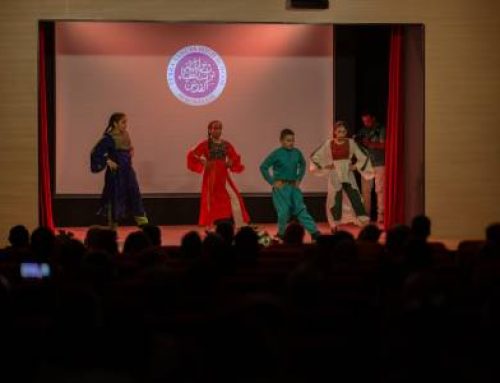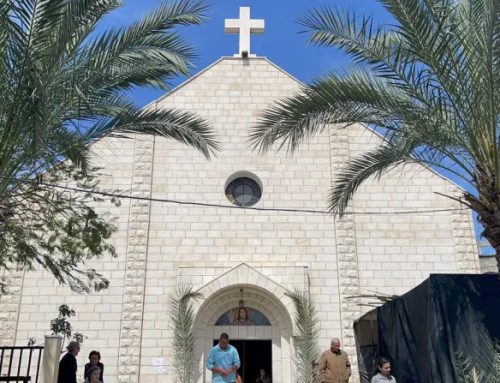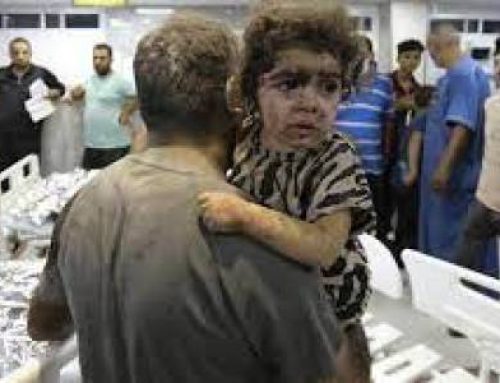The Holy Land Christian Ecumenical Foundation Fact Finding Mission to the Holy Land – Part Two May 16 – June 1, 2001
The Applied Research Institute, (ARIJ) Bethlehem, Professor Jad Isaac, General Director
Professor Isaac gave us an academic tour of his extensive work on water resources, crop production, environmental studies, settlements and political mapping of resources and events occurring in Palestine since the beginning of history. Because of his activism, the Israelis jailed Mr. Isaac for a period of time. As someone put it, with black humor, time in Israeli jails is called “Israeli Defense force post-graduate education.” He was a member of the Madrid and Oslo negotiating team. He concluded in retrospect, that his first love was research and therefore he would focus his activities on academic research on Palestine and play a backup role to Palestinian negotiators. He founded the institute in 1990. He is funded by various agencies assisting the development of Palestine. He created a political time line chart for the geographic area and demonstrated that ancient Israel ruled Palestine for a very short period of time compared to the total time of human habitation of what is now modern Israel and Palestine. He recently published An Atlas of Palestine a book that contains numerous graphic representations of the political, economic, and natural resources that represent the events and conditions of the West Bank and Gaza during the last one hundred years.
He stated that the Israelis have grossly distorted the Palestinian cause to their advantage. He also concludes that one cannot depend on assistance from the Arab states. There are 8.5 million Palestinians living at the moment: a third are living in Gaza and the West Bank, a third live in Jordan and a third live elsewhere in the world. Of all the Palestinians in the world, 18% are refugees: 350,000 Palestinian refugees live in the West Bank, 560,000 in Gaza, 1,000,000 in Jordan and 125,000 internal refugees.
In the Gaza Strip, he notes, the beaches are reserved for the Israelis. Roads have been constructed in Gaza to serve 125 settlers that are 500 (5 football fields) meters wide. Over 300,000 citrus and olive trees have been uprooted in Gaza in an attempt to destroy the agricultural economy.
There are 548 Palestinian villages in the West Bank but there are none in the Jordan Valley, the most fertile area in Palestine. The entire Jordan valley in the West Bank has been de-Palestinized and Jews settled in the place of Palestinians. Regardless of which political party was in power, 150 settlements were established in the West Bank since 1967. Settlement building on confiscated land was accelerated during the last 9 years of the Oslo Peace process. The settlements are connected by roads financed by the United States ($3.2 billion) on which only Israelis can travel. We saw paths and dirt roads that were used by the Palestinians to bypass check points and by-pass roads. The bypass roads themselves take up 1.54% of the West Bank land, most of which was confiscated from Palestinians. Sharon told the settlers to seize the hilltops and the evidence for this instruction is seen everywhere in the West Bank occupied territory. Settlements are located predominantly on hilltops. Significant tax incentives and social benefits were given to the settlers who chose to live in a settlement.
The Oslo 1 agreement returned Gaza and Jericho to the Palestinians. Jericho is now under Israeli military siege and is surrounded by a trench dug into the sand so that no vehicular traffic is allowed in or out of the town except through Israeli checkpoints.
The Oslo 2 agreement created areas A, B, and C. Area A is under Palestinian control, Area B is under Palestinian civil control but under Israeli Military occupation. Area C is under total Israeli control. The Israelis have used the Oslo 2 Agreement to consolidate their control of Area C by building barriers to vehicular travel to Area C, checkpoints prevent passage of Palestinians in and out of Area C, settlements are built on confiscated land, and military bases are placed in various places to maintain control of the area.
In Hebron, 400 settlers in the center of the city are protected by 1,200 Israeli soldiers and cause the entire town to remain under curfew to protect the settlers. The settlers, on the other hand, have a freedom of movement and commerce and at the same time aggressively harass the Hebron’s Palestinian population.
Bethlehem Chamber of Commerce, Samir Hasboun, PhD, President
The Chamber of Commerce was established in 1952 and serves the entire Bethlehem area where 123,000 people live, of which 27% are Christian. There are 3000 business establishments in the area and 1000 of them belong to the Chamber of Commerce. The area receives over on million tourists per year, of which 76% are pilgrims. The tourism section is made up of 23 hotels and hostels containing 4000 rooms. 1500 Palestinians are engaged in Beit Sahour in the transportation services.
Dr. Hasboun is an economist and provides consultation services to local businesses. The mayor of Bethlehem and the president of the Chamber of Commerce work together to build the Bethlehem area economy. The Palestinian National Authority has an agreement with the Chamber to conduct the region’s economic development. An economic plan has been developed that outlines the measures to be taken for development. The chamber publishes a quarterly survey of the region. The report is based on interviews and economic studies of the region. Due to the measures taken by the Israelis, the unemployment rate went from 8% to 41%. The tourist sector is closed and factories are working at 40% of capacity. As a result of the economic situation, Christian families are leaving the area and are migrating to Western countries. So far he has written 176 recommendations for visas. As soon as the school is completed in June, Dr. Hasboun believes that many of these families will leave
The towns of Bethlehem, Beit Sahour and Beit Jala are surrounded by Israeli settlements and Israeli military checkpoints that essentially prevent contact with the rest of the West Bank and obstruct the movement of people and goods. The Israelis at one point blocked the importation of milk and an appeal to the American Consulate broke this blockade. Fuel arrives by truck and the Israelis prevented delivery of the fuel to the local vendors. After extensive negotiations, the Israelis allowed a change in truck drivers at the checkpoint so that the fuel could be delivered to the town. Shelling by Israeli tanks has destroyed 48 houses and 36 families from these houses are living with relatives or in hotels at town expense. From the very beginning of the Intifada, the Muslim population has tried to help the Christians who have been displaced because of the bombardments originating from the forts and settlements.
The Chamber has good relationships with the Malmo, Sweden Chamber of Commerce and Germany’s Cologne Handicraft Union. The latter is working with the local handicraft businesses to help design, package and market local handicrafts from the Bethlehem area. Fifty handicraft producers will go to the handicraft exhibition in Portugal to display their wares. The United States wants to grant Bethlehem favored status so that products can be marketed in the United States without duties or taxes. The Chamber is working with the Commercial AttachA~





